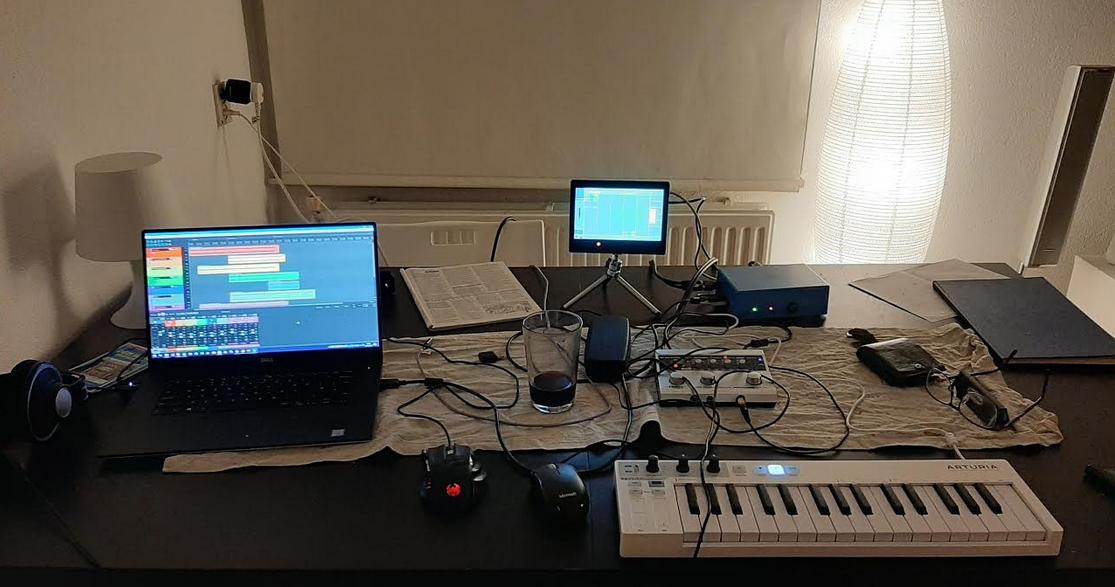A user review by Eddy Deegan
Introduction
I have been using a Yoshimi PI as part of my synth-based studio setup for nearly a year now, alongside a variety of hardware sythesizers including a Novation Summit, ASM Hydrasynth, Sequential Prophet 6, DSI OB-6, Korg Kronos and a large number of soft-synths from Arturia, Spectrasonics, Reason Studios and many more.
Before obtaining the Yoshimi-Pi I was well aware of the sonic capabilities offered by the Yoshimi software, and can assert wholeheartedly that it stands shoulder to shoulder with the best of them.
Despite this I had not used Yoshimi in my studio due to its dependence on a Linux host, a luxury which I did not have the space for in the studio.
Acquisition
When Will Godfrey announced the Yoshimi-Pi I was therefore delighted and ordered one straight away, a decision which I have not regretted for a moment. In fact, I have now have two.
When the device arrived a few days later I was immediately struck by how small and beautifully portable it was. I travel a lot for work and it was obvious that it would be a fantastic thing to take with me on occasion. The mini-screen is quite small but has a very sharp display and I had no trouble navigating around the software once I’d plugged a USB mouse and keyboard into the box.
In use
As one of the early adopters of the device, I volunteered to create a demo track using nothing but my Yoshimi-Pi and this can be found on the Yoshimi website at http://yoshimi.sourceforge.net.
Putting this track together was an interesting experience, not least because I was in lockdown while abroad on business in the early stages of the covid-19 pandemic. As I had a lot of time to myself and no studio within which to create any music this was the perfect opportunity to get to know the hardware incarnation of Yoshimi.
There was one challenge in that being away from home although I had the Yoshimi-Pi with me I did not have any keyboard controllers but fortunately I was able to obtain a small Arturia KeyStep before everything shut down.
The KeyStep has a simple on-board sequencer and an arpeggiator which makes it a great addition to the Yoshimi-Pi. Being a class-compliant USB device, it was recognised immediately by the Yoshimi-Pi and the latency is low enough that it felt like playing a ‘normal’ hardware synth.
Due to the lack of a studio environment and without a proper DAW (I was running Reaper, but it was on a work laptop) I was forced to work as best I could, without any MIDI sync in place. Despite these challenging circumstances, Yoshimi-Pi continued to operate flawlessly and although I had to do a lot of dragging audio tracks back and forth in Reaper to align them after recording my performances via the KeyStep the end result was quite pleasing.

Observations
For such a tiny device the Yoshimi-Pi is extremely impressive, not only in the quality of the hardware but in terms of the synthesis power offered by Yoshimi running on it. It is possible to overload the CPU on the Model 4 PI at the heart of the box but the threshold is more than high enough for the vast majority of applications.
I have not yet programmed any custom sounds from scratch on the Yoshimi-Pi, although I have made a number of modifications to the presets that were supplied with it on arrival. From delving into the pages that give access to the three sound engines, it is clear that the Yoshimi-Pi has the potential to compete head to head with some of the best commercial soft-synths available on the market, and in fact could give a number of hardware synths a run for their money too!
Conclusion
In conclusion, I anticipate spending more time with the Yoshimi-Pi going forwards. As a serious (ex-professional) musician I am quite particular about the equipment I use and it is certain that the Yoshimi-Pi will remain a permanent and much loved part of my setup.